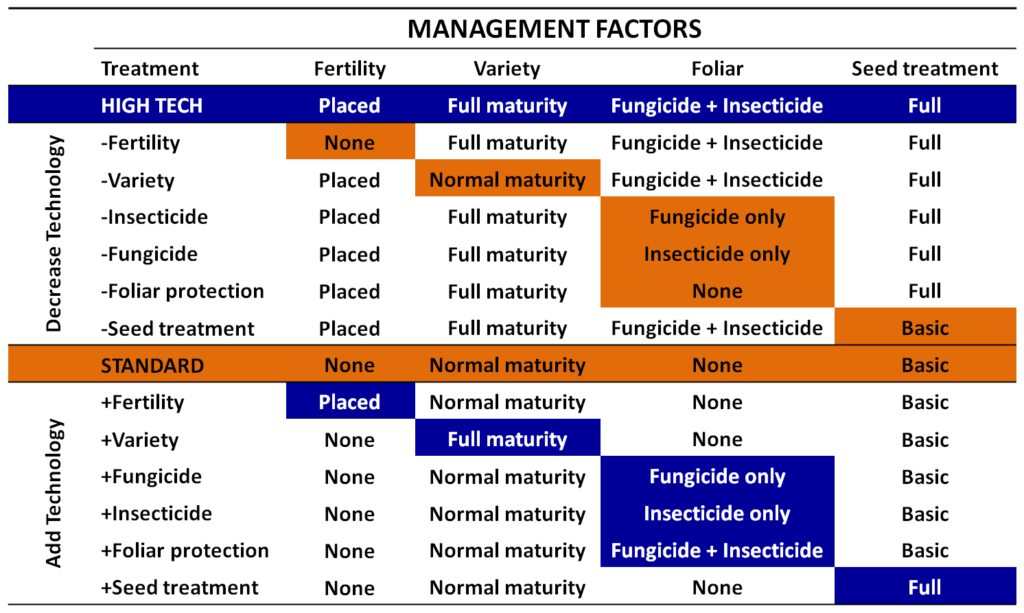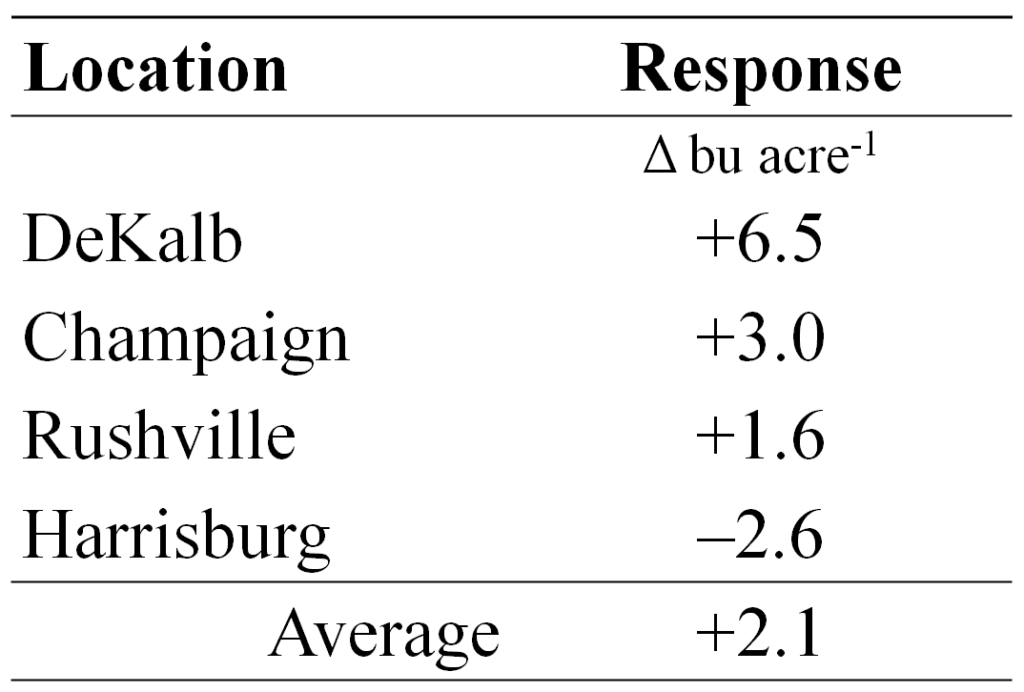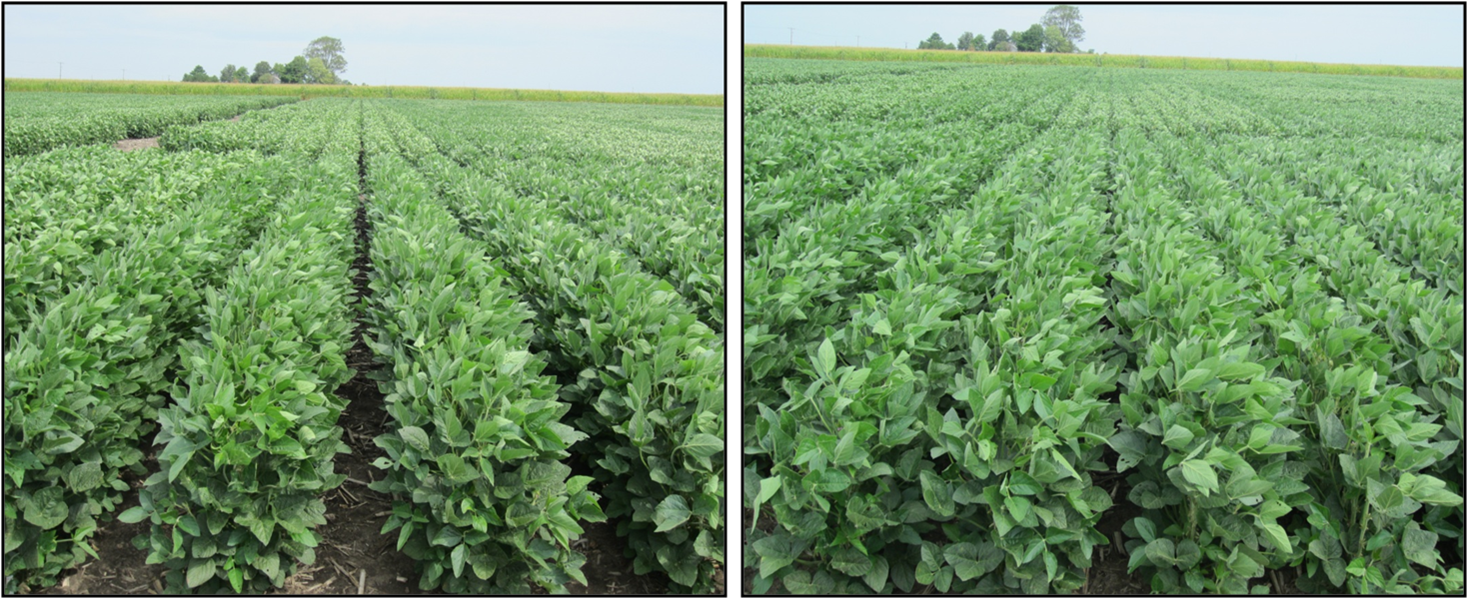Six Secrets for Increasing Soybean Yields
2017 Six Secrets webinar sponsored by the Illinois Soybean Association.
Based on the Six Secrets of Soybean Success results, we are now focusing on how specific management procedures interact to power yield and potentially identifying ‘racehorse/offensive’ and ‘workhorse/defensive’ varieties.
In 2016, we focused on the interactions of variety, fertility (N, P, S, and Zn), and foliar protection at three locations in Illinois (Yorkville, Champaign, and Harrisburg). Sorry, we don’t have a fancy webpage with graphs and tables yet for 2016, but in the interest of time, you may download the .pdf of results here.
Summary from 2012- the beginning of the Six Secrets study
Management practices for soybean production have not kept up with genetic improvements for soybean yield, pest resistance, and stress tolerance. We believe that understanding the indivdual effects of six categorical yield factors may help us implement improved management practices for increased soybean yield. These factors are weather, fertility, variety, foliar crop protection (fungicides and insecticides), seed treatments, and row spacing; the so-called ‘Six Secrets of Soybean Success’.
With the support of the Illinois Soybean Association, Mosaic, Syngenta, BASF, and Monsanto we evaluated the Six Secrets concept at four locations across Illinois in 2012. A ‘standard’ management practice (a variety of typical maturity for the region with either untreated seed or a basic seed treatment) was compared to a ‘high tech’ management practice in which a full-season variety for the region was grown with additional N, P, S, and Zn fertility (MicroEssentials SZ), foliar protection from insects and fungal pathogens, and an advanced seed treatment package consisting of a fungicide, insecticide, and nematicide. All treatments were compared in 20-inch and 30-inch rows. Significant yield responses to the high tech package were detected in six of eight trials.
Averaged across six trials which included different variety comparisons and crop protection products, the ‘high tech’ package increased yield by 9.9 bushels/acre (P ≤ 0.05). Narrow row spacing increased yield at three of the four locations; Champaign, DeKalb, and Rushville with respective yield increases of 3.0, 6.5, and 1.6 bushels/acre. At the management responsive sites, banded fertility (N, P, S, and Zn) and full foliar protection (fungicide + insecticide) had the greatest individual effects on yield with respective contributions of 4.3 and 3.6 bushels/acre when averaged across the traditional and high tech systems. Switching from a variety of ‘normal’ maturity to a fuller season variety had a 3.2 bushel/acre effect on yield, and use of a seed treatment including a fungicide, insecticide, and nematicide contributed 2.6 bushels/acre. The results from 2012 highlight the importance of choosing a high yielding, locally-adapted soybean variety and managing it with fertilizer placement and a full suite of crop protection products.
Research approach
Five management factors (fertility, variety, foliar insecticide/fungicide, seed treatment, and row spacing) for high yield soybean production were evaluated in an effort to identify those with the greatest potential to increase soybean yields in an additive or synergistic manner. Although we cannot control the weather, multi-location trials conducted across multiple years will provide us the opportunity to understand soybean yield variability associated with environmental conditions, and allow us to determine how management inputs interact with weather. The management factors were evaluated in an omission plot design (Table 1).
This omission plot design contrasts a ‘standard’ farmer practice in which a soybean variety of appropriate maturity for the area is grown with no additional inputs to a ‘high tech’ management approach. The high tech approach includes improved N, P, S, and Zn fertility, a fuller season or ‘offensive’ soybean variety, protection from insect pests and fungal pathogens with foliar insecticides and fungicides, and an advanced seed treatment. One at a time, each factor is added at its high tech level to the standard management system, and at the same time, each factor is removed from the high tech system and replaced with its standard counterpart.

Locations
The trials were planted at four long-term research sites that we have established in east-central (Champaign), northern (DeKalb), southern (Harrisburg), and western (Rushville), IL. Planting dates were 11 June (Champaign), 12 June (DeKalb), 3 June (Harrisburg), and 6 June (Rushville).
Fertility
Fertilizer containing N, P, Zn, and S was banded 4 to 6 inches deep immediately prior to planting using a research-scale fertilizer toolbar. Mosaic’s MicroEssentials SZ (MESZ; 12-40-0-10S-1Zn) product was applied at a rate of 187.5 lb product/acre. This product rate supplied 22.5 lb N, 75 lb P2O5, 18.8 lb S, and 1.9 lb Zn per acre. The fertilizer application was targeted to supply the P nutrition needed to replace the approximate amount removed with soybean grain at the 80 bushel/acre yield level.
Variety
Adapted soybean varieties for each location were used per the recommendations of the seed company partners. At each site, a longer maturity variety was placed in the high tech system, while a variety of more typical maturity was used in the standard system. The rationale for using a variety of later maturity in the high tech system is that a longer period of vegetative growth might allow for greater responsiveness to inputs like fertility and foliar crop protection. The average difference between the ‘normal’ and ‘full season’ varieties was 0.2 maturity units (range of 0.1 to 0.4 maturity units).
Protection from insect pests and fungal pathogens
The value of a foliar fungicide and an insecticide were evaluated separately and in combination. The fungicides used were Priaxor (fluxapyroxad + pyraclostrobin) or Quilt Xcel (azoxystrobin + propiconazole). Insecticides consisted of Fastac (alpha-cypermethrin) or Endigo ZC (lambda-cyhalothrin + thiamethoxam). Applications were made at the beginning of pod development (R3 growth stage).
Seed treatment
The standard management treatments included either untreated seed or seed treated with Apron Maxx (Apron XL + Maxim 4FS). The high tech management treatments provided protection from fungal pathogens, insects, and nematodes. The Acceleron with Poncho/VOTiVO seed treatment was used in one set of trials while Avicta Complete Beans (Apron XL + Maxim 4FS + Cruiser 5FS + Avicta 500FS) was used in another set of trials.
Row spacing
The entire omission plot trial was evaluated in both 20-inch and 30-inch rows using a plot planter designed with an adjustable toolbar. Although 20-inch rows are not as popular as 15-inch rows for soybean production, we have the ability to place fertilizer in 20-inch rows without running over rows as would be the case in 15-inch rows.
Response to narrow row spacing
The soybean omission plot management trials were planted in 20-inch and 30-inch rows and significant row spacing effects were detected at each location. Narrow rows increased yields at Champaign, DeKalb, and Rushville, while 30-inch rows were superior to 20-inch rows at Harrisburg (Table 2). The advantage of narrow rows increased from south to north suggesting that practices which promote early season canopy closure (Figure 1) may be of greater value in locations with a shorter growing season.
In general, there was no row spacing x treatment interaction, and the yields presented for the addition-omission treatments (fertility, variety, foliar crop protection, and seed treatment) are averaged across both levels of row spacing.


Value of individual management inputs
Management responses of individual trials ranged from +7.5 to +12.0 bu/acre. The average increase from the full high tech package relative to the standard system was +9.9 bu/acre (P ≤ 0.05). Although the average increase from the full package was approximately 10 bu/acre, strictly evaluating this comparison does not indicate if each individual omission plot factor (fertility, variety, fungicide, insecticide, and seed treatment) contributed 2 bu/acre, or if some factors were of greater value.
The increases from adding individual management factors to the standard system as well as the yield decreases resulting from omitting individual factors from the high tech system are shown in Table 3. It is clear from this data that only implementing one management practice is insufficient to achieve the full 9.9 bu/acre increase from the combination of inputs that go into the high tech package.

Conclusions
- For maximum soybean yield a systems approach is needed that combines individual practices known to impact productivity (Table 4).
- High yield must be planned for from the beginning of the season because factors like fertility, variety, and seed treatment are difficult or impossible to change afterwards.
- Management factors are partially additive when combined into a ‘high tech’ package.
